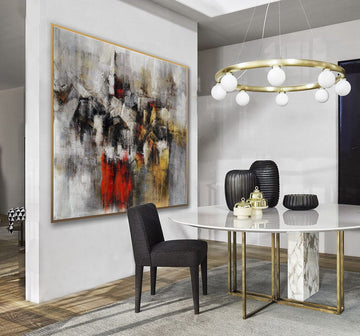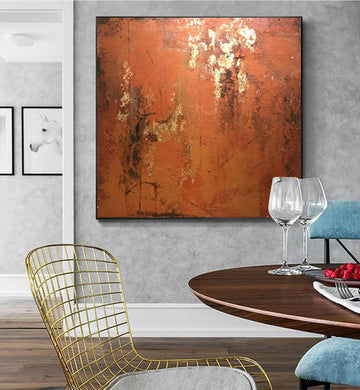Creating a Harmonious Dining Room Decor with Furniture, Wall Art, and Color Matching Techniques
The dining room is an essential space in any home, as it is where we share meals and gather with family and friends. Decorating this room can be a fun and creative process, but it can also be challenging to balance individual furniture pieces, big wall art, and color schemes. In this essay, we will explore the relationship between individual restaurant furniture and wall art, color matching techniques, and other tips for creating a harmonious dining room decor.

The first step in decorating a dining room is to choose the right furniture pieces. The dining table is the centerpiece of the room, and it should be large enough to accommodate your family and guests comfortably. The chairs should be comfortable and match the style of the table. For example, if you have a traditional wooden table, you might choose upholstered chairs with a similar wood finish. On the other hand, if you have a modern glass table, you might choose sleek metal chairs with leather seats.

Once you have chosen your dining room furniture, you can start to think about wall art. Wall art can add visual interest and personality to the room, but it should complement the furniture pieces without overwhelming them. The key is to choose art that matches the style and color scheme of the room. For example, if you have a neutral color scheme with black and white furniture, you might choose abstract art with bold black and white lines or patterns. Alternatively, if you have a warm color scheme with wooden furniture, you might choose landscape or nature-themed art with earthy tones.
Another important aspect of dining room decor is color matching. The color scheme of the room should create a cohesive and inviting atmosphere. A simple way to achieve this is to choose a dominant color and use it throughout the room in different shades and textures. For example, if you have a blue color scheme, you might use light blue walls, navy blue chairs, and blue and white striped curtains. You can also add accent colors to create contrast and interest. For example, you might add a pop of red with a centerpiece or a vase of flowers.
In addition to furniture, wall art, and color matching, there are other elements to consider when decorating a dining room. Lighting is crucial for creating the right mood and ambiance. You might consider installing a chandelier or pendant light over the dining table, or adding lamps or sconces to create a warm and inviting atmosphere. You might also add decorative accents such as table runners, placemats, or napkins to add texture and interest to the table setting.
Finally, it is important to consider the size and layout of the dining room when decorating. If you have a small dining room, you might choose furniture pieces that are more compact and space-saving, such as a round table or a bench. You might also choose wall art that is smaller in scale to avoid overwhelming the space. On the other hand, if you have a large dining room, you might choose furniture pieces that are grand and impressive, such as a long rectangular table or a large china cabinet. You might also choose wall art that is more dramatic in scale, such as a large canvas or a gallery wall.
In conclusion, decorating a dining room requires careful consideration of individual furniture pieces, wall art, color schemes, lighting, and layout. By choosing furniture that matches the style of the room, wall art that complements the furniture, and a color scheme that creates a cohesive and inviting atmosphere, you can create a beautiful and harmonious dining room decor that you and your guests will love.
